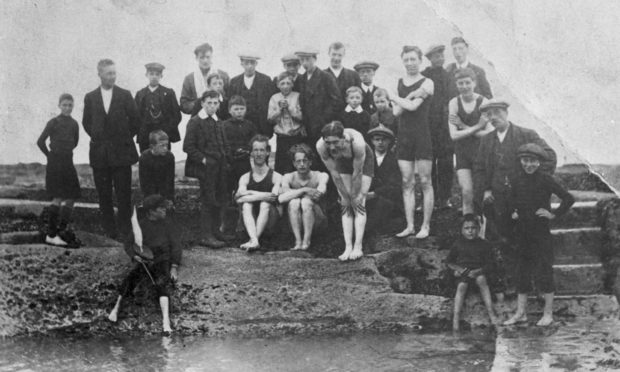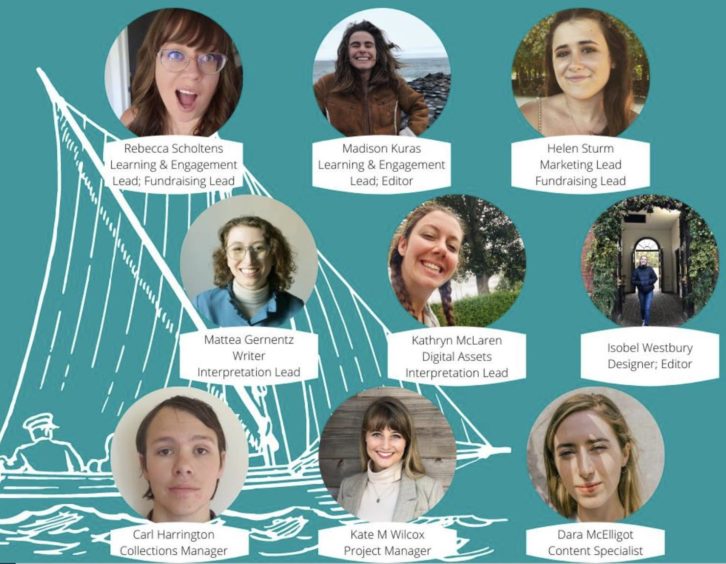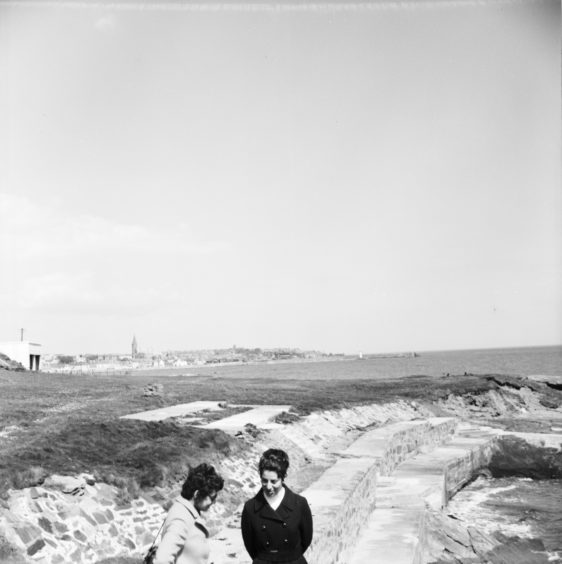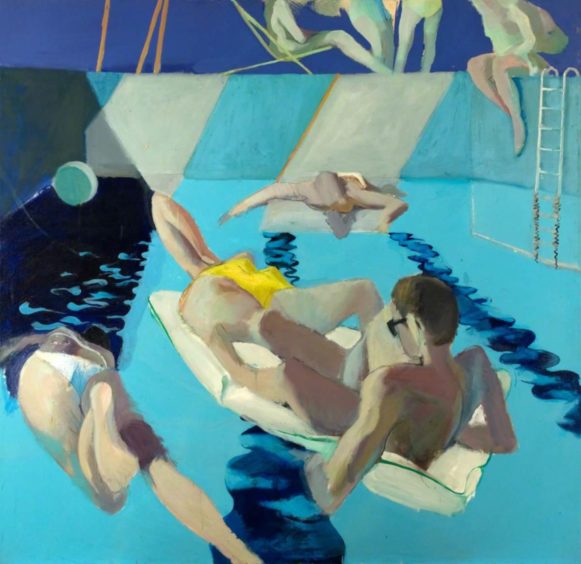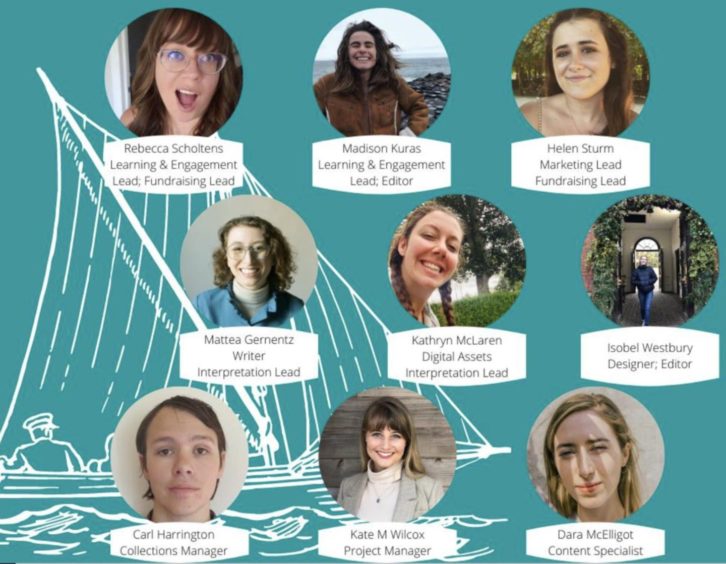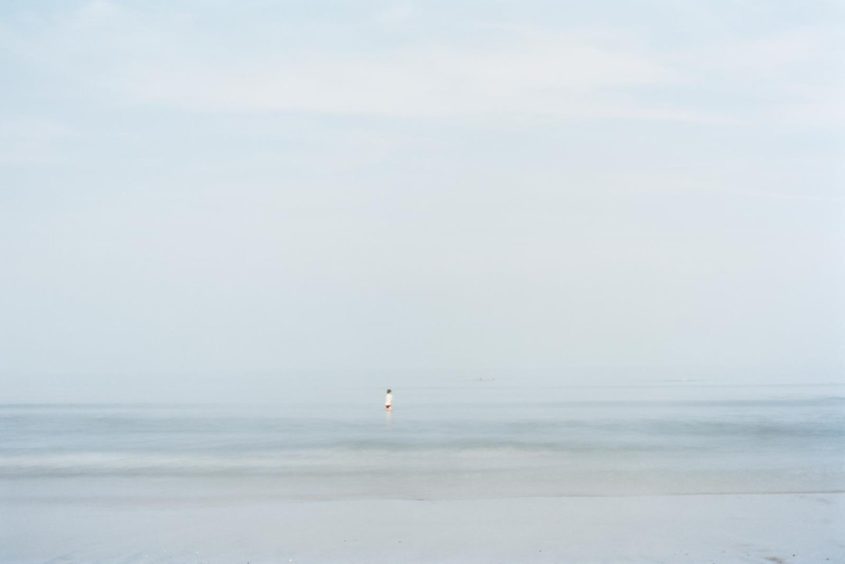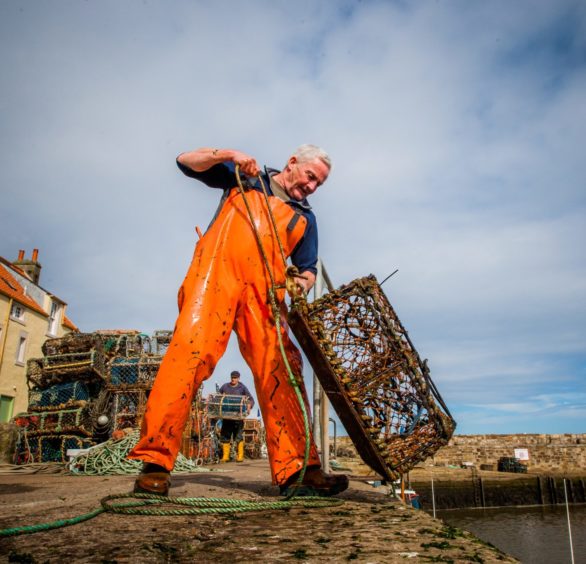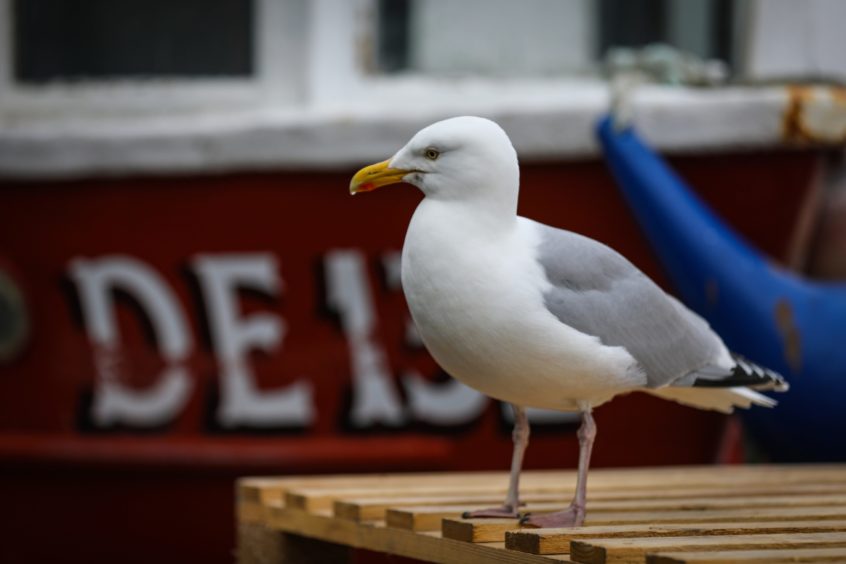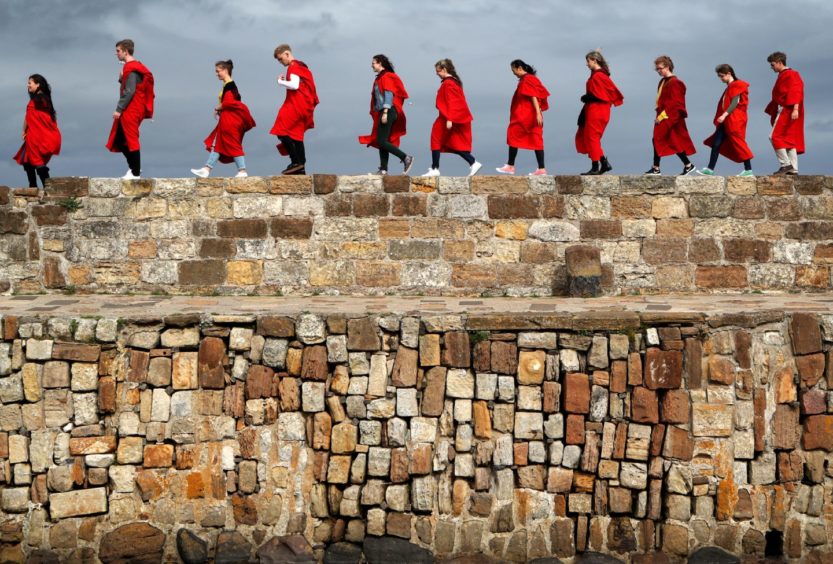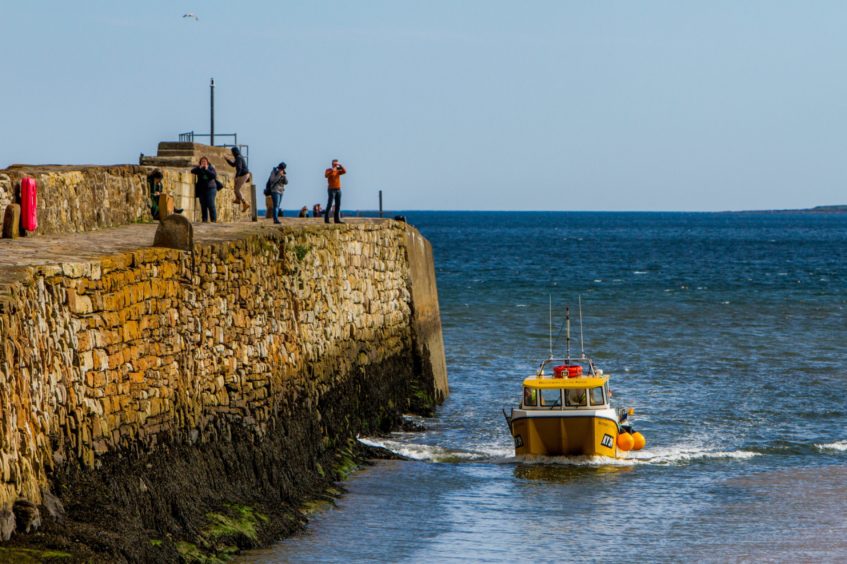Michael Alexander speaks to the organisers of By the Seaside: Heritage, Healing and New Horizons – a new exhibition opening at the Scottish Fisheries Museum in Anstruther which is a collaboration with postgraduate students from St Andrews University.
For anyone lucky enough to live near the sea, access to the coast for walks and fresh air during lockdown has done wonders for the health and wellbeing of many over the past year.
For eight postgraduate museology students at St Andrews University, however, the links between human wellness and Scotland’s oceanic heritage – or blue space – has also inspired a collaboration with the Scottish Fisheries Museum in Anstruther.
When the students started working with the museum to curate By the Seaside: Heritage, Healing and New Horizons, they did not expect to be studying amid an international pandemic, nor did they plan to design their first professional exhibition completely remotely.
However, the students have persevered and, with the digital launch of the exhibition taking place this evening, they hope that the easing of Covid restrictions might allow visitors to visit the in-person exhibition at the Scottish Fisheries Museum from late April/early May.
New relevance of exhibition
Mattea Gernentz, the project’s writer and interpretation lead, said the exhibition was originally meant to coincide with VisitScotland’s Year of Coasts and Waters programming throughout 2020 and 2021.
However, the exhibition took on a new relevance with the Covid-19 restrictions, which sent a shared sense of isolation and uncertainty throughout the world.
Suddenly, this exhibition on the ocean’s ability to heal and inspire became a “necessary consolation for mental and physical health in our everyday lives”.
“It explores the impact of blue space on human experience and well-being and has a unique, wellness-oriented take on oceanic heritage,” says Mattea.
“It simultaneously directs our gaze outwards and inwards, urging us to consider how blue spaces have impacted our creativity, growth, and wellbeing, as well as pointing out ways that the sea has served as a means of both leisure and livelihood.”
The student team has certainly had to overcome many obstacles to put together the exhibition which explores humanity’s interconnectivity with water, through physical and digital means.
Museum and Gallery studies director at St Andrews University Karen D. Brown, says: ‘We are immensely proud of how our students have adapted in these uncertain times to demonstrate resilience and creativity in curating such a meaningful topic for the Fife coastline and its residents during the pandemic.”
When conditions allow visitors to the in-person exhibition in Anstruther, they will see it’s been enhanced by a variety of innovative digital content.
For example, the show’s podcast, Sound Waves, interviews wild swimmers, artists, fisher folk, and others from the Fife community, while the website’s blog includes perspectives from the St Andrews community about how the sea has influenced their lives.
Through the exhibition and its programming for public engagement, the team hopes to encourage reflection on how the sea has proved influential in lives across Scotland, and they are excited to bring the ocean directly into homes throughout the country.
Digital opening
The digital opening on March 20 includes the keynote speaker of Dr James Grellier from the University of Exeter, who is most well-known for his EU-backed ‘Blue Health Project’ of 2020, among other panelists and a musical performance.
For the students, however, it’s also been an opportunity to get practical experience of curating an exhibition albeit under difficult circumstances they could never have envisaged.
MLitt St Andrews University Museum and Cultural Studies student Helen Sturm, who is acting as marketing and fundraising officer for the exhibition, told The Courier it had not been an easy time being isolated during Covid but they were pleased with the results and hoped public feedback would be positive.
Giving an insight into her own circumstances, the 23-year-old American explained how she started the course at home in Maine, USA, last year.
After a month of face-to-face classes in St Andrews during October/November, she returned home to the USA before Christmas, and had only recently returned to Fife where, at the time of this interview, she was on the final day of her Covid travel quarantine.
“I was born and raised in Maine in the US,” she explains.
“I went to university in North Carolina at Davidson College – a small liberal arts school where I studied art history and anthropology and I also did some studio art there as a painter.
“I graduated in 2020 – virtually, at home. A year ago this week we were sent home.
“All of the jobs I applied to in the US all shut down.
“I really had no idea what to do next. The future just seemed really uncertain.
“I didn’t have any job prospects, the election for 2020 was coming up, I was concerned if Trump was re-elected what that would mean.
“It was just kind of stressful to figure out what was next.
“So I decided to apply to grad school early.
“I was planning on doing that in my mid to late 20s.
“I didn’t expect to go right into it. But I needed something that was productive to do and this seemed like the best option.”
St Andrews – a lifelong dream!
Helen explained it was a “lifelong dream” to study at St Andrews.
As a 15-year-old, when considering undergraduate options, she’d visited St Andrews as part of a Scotland/England university tour before deciding to study in the US.
“Travelling to study in the UK seemed a little too much for me when I was 18,” she reflects.
“I know people do it and it’s great. But I really liked the school I went to in North Carolina.”
Helen, who has an interest in promoting positive mental health, says St Andrews very much reminds her of Maine where she grew up – and at the heart of this connection is the link to the sea.
“I’m a very creative person and also very introverted,” she says.
“Art has always been really important to me whether it’s hoping to work in a museum or drawing or paintings of my own.
“I’ve always found the sea to be a great source of inspiration.
“There’s just something mysterious about it. Almost like this darkness to it as well that you don’t really know what’s going on beneath the surface. It’s also so beautiful.
“Back in Maine, our family house which has been in the Sturm family for 100 years, is right on the water and that’s where I grew up.
“That’s where I would be with all my friends and I learned how to drive the boat and go sailing. All of my core memories of growing up have been there.
“You have a different kind of personality if you grow up next to the ocean. A kind of curiosity about the world, the natural world, that’s always been important to me and still is.
“So coming to St Andrews really reminds me of Maine. It’s kind of direct across the ocean. It feels like two separate parts of the same thing. The coastline is so similar. I’ve always lived near the ocean. That’s always been a point of reference for me.”
Covid isolation – a very different student experience
There’s no doubt the student experience has been very different for Helen and her fellow students and she admits it’s not been “ideal”.
When she started the MLitt at home in Maine, which is five hours behind Scotland, she was getting up at 3.30am to attend online lectures at 9am St Andrews time.
Students have also been unable to visit museums in Scotland or in Europe.
At the time of this interview, Helen has never even visited the Scottish Fisheries Museum where the exhibition she’s helped curate is to be held.
But on a more positive note, having gone remote again since January, the class has been able to hear a lot of interesting Zoom lectures from around the world.
She’s also learned a lot of new communication skills – making new friendships and relationships with mentors and students despite not being able to ever meet them in person.
“It’s been a difficult transition,” she says.
“I’ve not been able to see anyone in person the whole time.
“It’s pretty isolating and I really do miss my family and friends in the US.
“It’s a little more open there – not that that’s necessarily good.
“My friends are all able to see each other and I haven’t been able to see anyone for months.
“I think this course is invaluable for me though because it has allowed me to figure out what I want to do within the field of the arts.
“And I really do love the PR and marketing aspect of it which obviously is my position for the exhibition.
“Without doing this course I never ever would have guessed that I’d like that. So I’m very grateful for that.
“Also just looking and working with the fisheries museum archives – it’s been really really interesting. Not being a native Scottish person it’s been fascinating for me.”
· For more information on By the Seaside: Heritage, Healing and New Horizons, go to bytheseaside-exhibition.co.uk/ and www.scotfishmuseum.org
